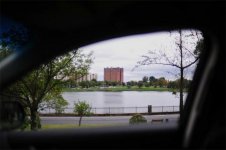semilog
curmudgeonly optimist
The best is 35 2.0 and 2.8 manual focus AiS Nikkors.
Lenses are more complicated than that.
Having spent 15 years using the 35/2 AIS as my main lens, I think that I can say a thing or two about its strengths and weaknesses.
It's a good-to-very-good lens, but "best" depends on how you're using the lens, and for what. Many people think the pre-ASPH 'lux is the "best" 35 ever, despite the fact that it is far from the "best" in purely quantitative terms.
The 35/2 AIS is poor for night photography due to reflections and coma. More generally, it's adequate but not fantastic at f/2 and f/2.8, especially in the corners. The Summilux ASPH blows the 35/2 AIS into the weeds at wide apertures; I say that having owned both for nearly a year before finally selling the AIS, sometimes shooting both side-by-side.
Depending on the application, several lenses may be better, including the ZF Distagon 35/2, the 35/2 AF-D, the C-V SLII 40/2, and the brand-spankin'-new 35/1.4, which might just be the best 35 ever shipped — even when compared vs. the Leica ASPH's and ZM Biogons.
All that said, the venerable 35/2 AIS gets the job done.

Marsh and eucalyptus trees, Natural Bridges State Park, California.
35/2 AIS @ f/5.6, 1/15 sec. handheld, Kodachrome 200.
Last edited:








